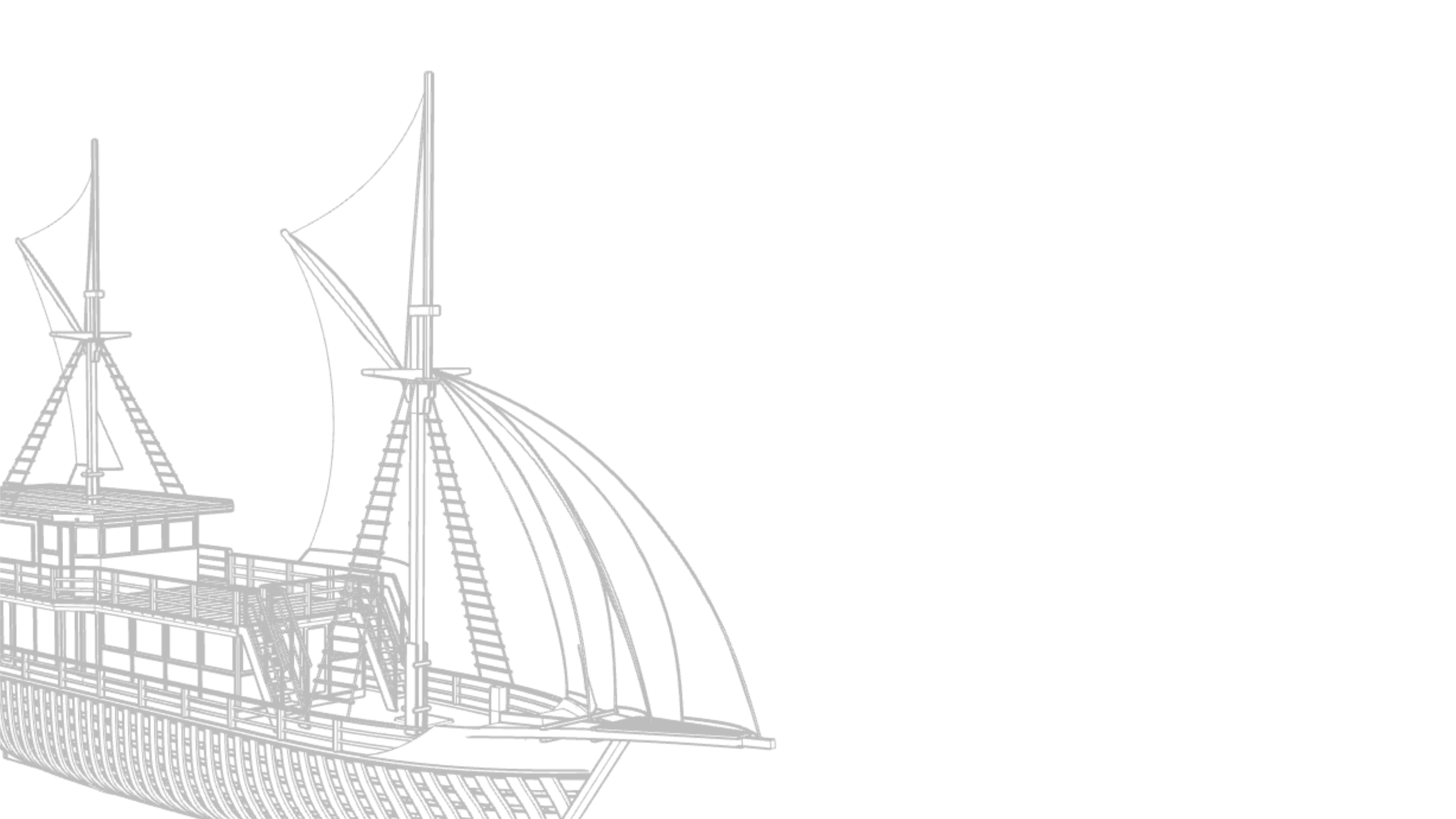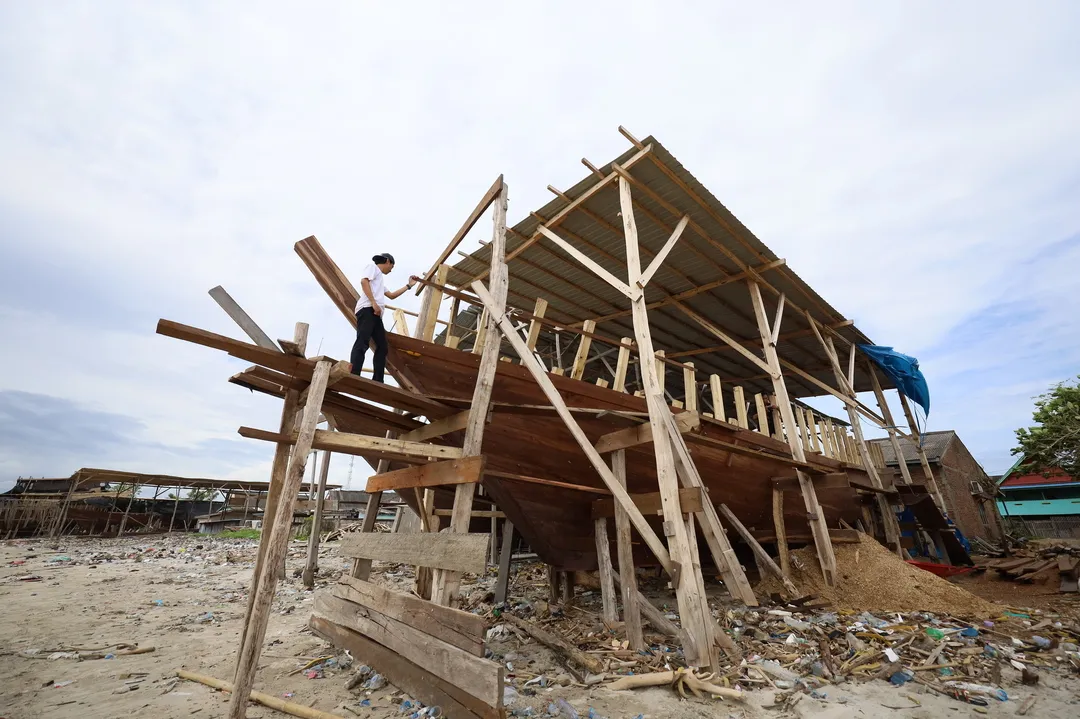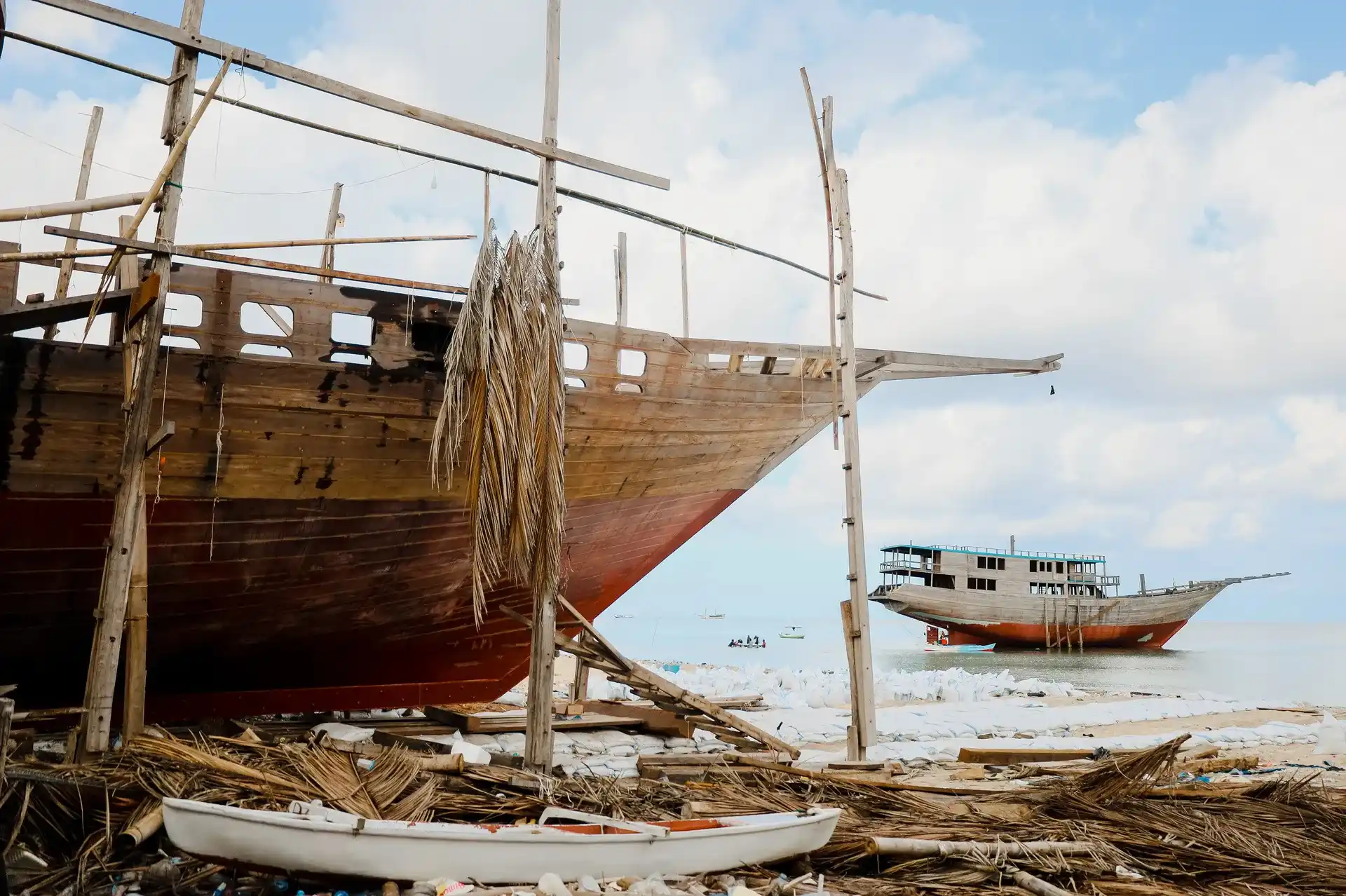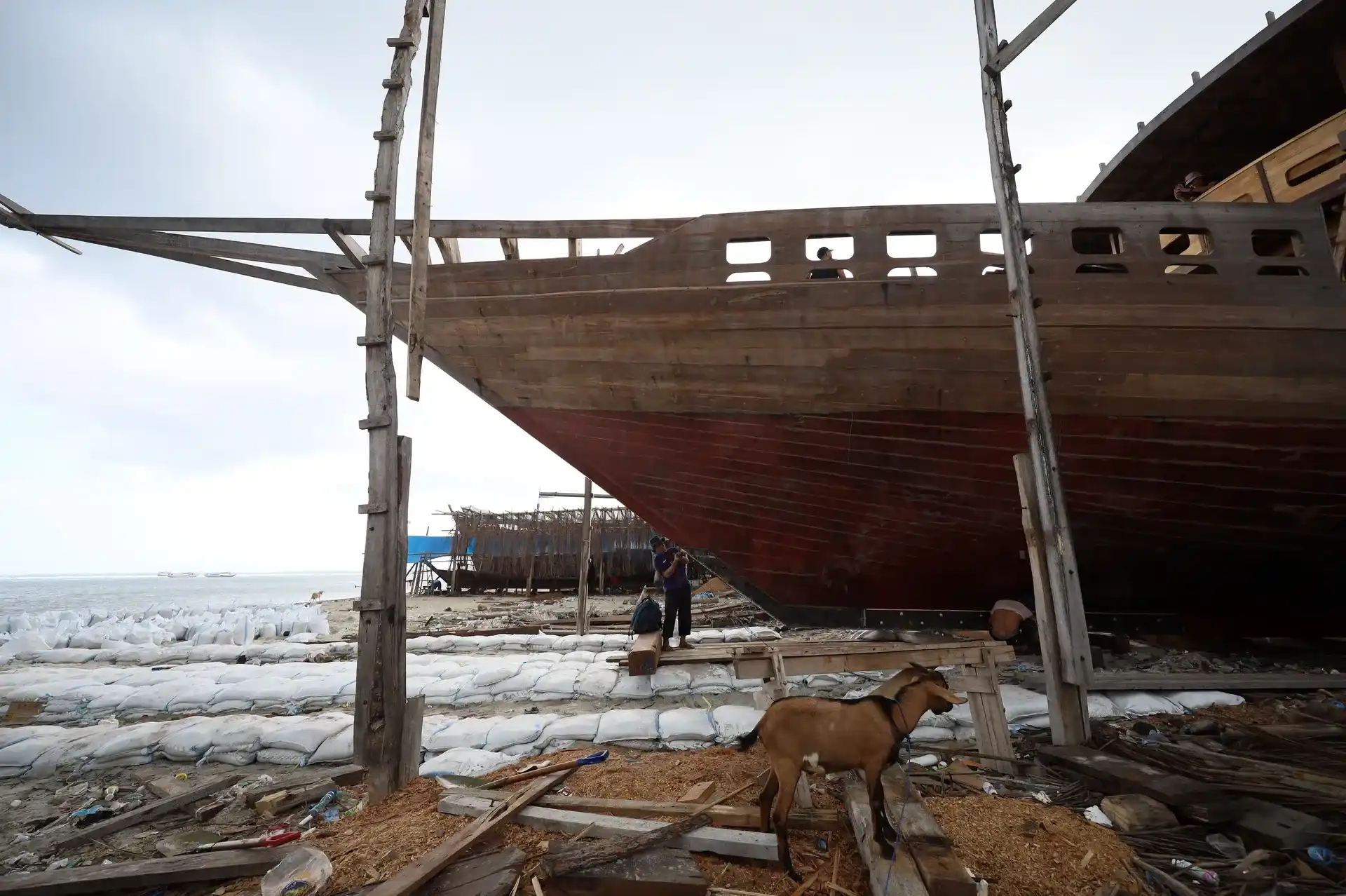How Indonesia’s Traditional Boat Builders Are Preserving Culture
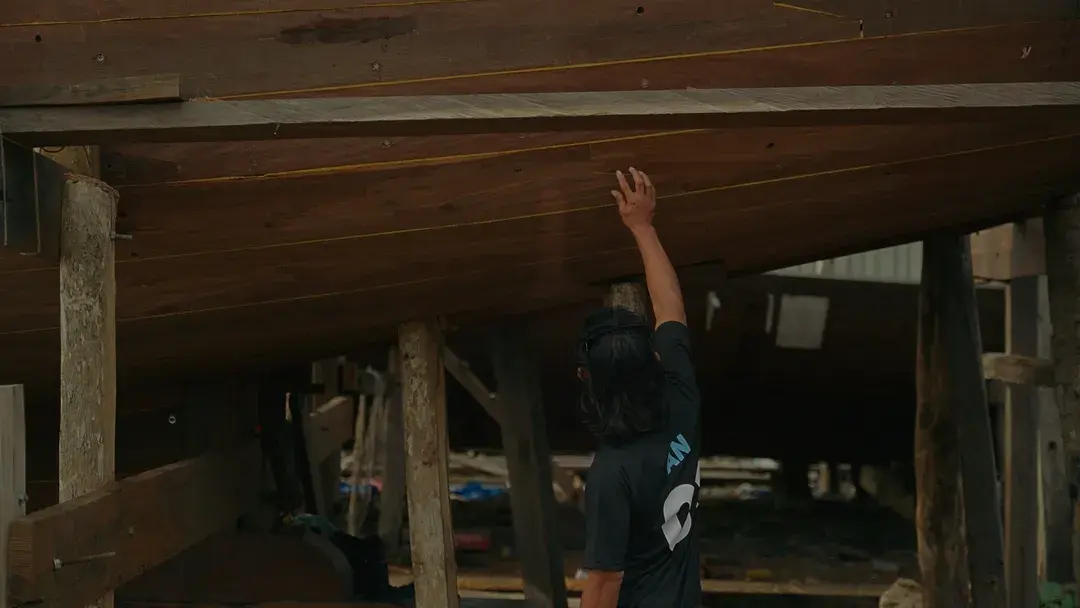
Traditional boat builders in Indonesia preserve a living maritime legacy by crafting vessels like the Phinisi and Sandeq by hand. Their skills connect generations and offer Voyagers a rare glimpse into Indonesia’s seafaring soul.
Let’s explore who these craftsmen are—and what makes their skills truly irreplaceable.
Who Are the Traditional Boat Builders?
Traditional boat builders in Indonesia come from coastal communities where the sea is both livelihood and legacy. These artisans don’t just build boats—they shape culture, identity, and survival across generations.
Key communities and their traditions include:
- Bugis-Makassar (South Sulawesi): Known for crafting the iconic Phinisi, these master builders are concentrated in villages like Tana Beru, where shipyards stretch across the shoreline.
- Mandar (West Sulawesi): These seafarers create the Sandeq, a high-speed outrigger boat, and are celebrated for their sleek, fast designs.
- Papuan builders (Kumbe Village): In Papua, boatbuilders maintain traditional dugout canoe methods for river and coastal travel, often with distinct ceremonial functions.
Read Also: The Timeless Elegance of the Indonesian Phinisi: Where Heritage Meets Luxury
Within these communities, roles are often divided and passed down orally:
- Framesmiths shape and align the boat’s wooden skeleton.
- Hull joiners fit planks without nails, using dowels and resin.
- Rigging experts prepare the sails, ropes, and masts.
- Spiritual leaders or elders guide the blessing rituals that start and end construction.
This knowledge is not written down—it lives in stories, hands, and daily practice, taught from one generation to the next.
What Vessels Are They Crafting Today?
Across Indonesia’s islands, traditional boat builders continue crafting a wide range of vessels—each one shaped by regional needs, natural environments, and ancestral knowledge. Here are some of the most iconic types still being built by hand today:
1. Phinisi – Bulukumba / Tana Beru, South Sulawesi
The Phinisi is Indonesia’s most internationally recognized traditional sailing vessel. Built by the Bugis-Makassar boatbuilders in Tana Beru, this two-masted wooden ship once carried spices across the archipelago and beyond.
Today, it has evolved into a cultural symbol and is often used for tourism—like liveaboard cruises in Komodo and Raja Ampat. Each Phinisi is handcrafted from tropical hardwood without blueprints, with rituals marking key stages from keel-laying to launch.
2. Sandeq – West Sulawesi
Known as the fastest traditional sailing boat in Indonesia, the Sandeq is crafted by Mandar communities along the western Sulawesi coast. Its slim hull and triangular sail design make it ideal for racing and coastal navigation.
Sandeq boats are still built for local fishing and celebrated in cultural events like the annual Sandeq Race, a high-speed journey from Majene to Makassar.
The building process combines lightweight wood and aerodynamic precision—passed down orally from master to apprentice.
3. Bago & Paduwang – Coastal East Java and Madura
Along the northern coasts of East Java and Madura, boatbuilders create Bago and Paduwang vessels—both used for fishing and cargo transport.
The Bago is larger and often has a motorized engine, while the Paduwang features a distinct double-outrigger design for balance on choppy waters.
These boats represent a blend of ancient and adaptive technology, responding to both traditional needs and modern demands for speed and storage.
4. Dugouts & Fishing Boats – Papua (e.g., Kumbe Village)
In Papua, especially in coastal villages like Kumbe, boatbuilding takes the form of hollowed-out dugouts and narrow fishing canoes.
Using basic tools, builders carve single logs into seaworthy vessels, perfect for river or inshore fishing.
Some boats incorporate sail or paddle elements and are often customized for local sea conditions.
These vessels reflect deep harmony with nature and are essential to the survival of many remote Papuan communities.
Read Also: 7 Types of Traditional Indonesian Boats You Can Still See Today
How Do Indonesian Boat Builders Work Without Blueprints?
Many traditional Indonesian boat builders rely not on written plans, but on memory, intuition, and deeply embedded cultural knowledge passed down through generations.
Instead of technical blueprints, they use:
- Mental measurements and proportions based on experience—some masters can visualize the entire boat before a single timber is cut.
- Physical references, such as ropes or sticks, to estimate dimensions and align symmetry.
- Oral guidance, where elders instruct younger builders through direct demonstration and storytelling.
- Ritual alignment, including aligning the keel based on natural elements like the rising sun or tides.
This method allows flexibility, adaptation to available wood, and deep personalization. It’s not just craft—it’s embodied knowledge rooted in nature, rhythm, and ancestry.
How They Work: Tools, Technique & Tradition
Traditional boat builders in Indonesia rely on centuries-old methods, passed down through practice and storytelling rather than formal diagrams or engineering plans.
Their work combines skilled craftsmanship with cultural ritual, resulting in boats that are not only seaworthy—but soulful.
They use manual tools such as adzes, chisels, mallets, and hand drills, often handcrafted or inherited from elders.
These tools allow for fine, responsive control when shaping the boat’s curves and joints, a necessity when working without blueprints.
The materials used are equally rooted in tradition:
- Ironwood (ulin/kayu besi) for keels and hulls, prized for its strength and rot resistance
- Teak for decks and interiors due to its water-resistant oils
- Natural resin and oils for sealing gaps
- Rope made from natural fibers, used for rigging and joining components.
Spiritual and cultural rituals are deeply woven into the process. Ceremonies are held when laying the keel, selecting wood, or launching the boat—invoking ancestral blessings, protection, and safe passage. For these artisans, boatbuilding is not just craft—it’s a sacred duty and a living tradition.
Why Their Craft Still Matters
The work of traditional boat builders in Indonesia goes far beyond woodworking—it safeguards living culture, resilience, and connection to place. Their craft preserves identity, offers sustainable solutions, and builds bridges between past and future. Here are the reason:
1. Cultural Identity
Each vessel—whether a Phinisi, Sandeq, or dugout canoe—serves as a symbol of its people.
For many coastal communities, boats are not just tools; they are emblems of heritage, pride, and intergenerational continuity.
Building them keeps ancestral knowledge alive and reinforces a deep bond with the sea.
2. Ecological Smarts
Traditional boats are designed to suit specific coastal environments, currents, and winds.
They’re built from natural, local materials and require no fuel or engines, making them low-carbon alternatives to modern vessels.
Their eco-efficiency offers insight into sustainable design rooted in place-based wisdom.
3. Tourism and Economy
Cultural tourism thrives on authenticity. From Phinisi sailing tours to shipyard visits in Tana Beru, these boats power a value-driven, livelihood-supporting economy.
They attract Voyagers seeking deeper, more meaningful travel experiences, and provide income for entire communities.
4. Educational value
These builders are living case studies of human-sea relationships.
Their craft helps teach younger generations (and visiting travelers) about maritime ecology, cultural resilience, and the importance of slowing down to understand tradition.
Their workshops are not just about construction—they’re classrooms of heritage.
Traditional boat builders in Indonesia are not just craftsmen, they are guardians of living marine culture.
Their skills, passed down through generations, are vital to preserving not only seafaring traditions but also coastal identity and sustainable practice.
If you’d like to experience this in person, head to Riara Marine’s shipyard in Bulukumba—where the story of Indonesia’s traditional boats is still being written, plank by plank.
Read Also: Anatomy of a Phinisi Ship: Inside Indonesia’s Iconic Wooden Vessel
Witness Indonesia’s Boatbuilding Heritage at Riara Marine
If you want to truly connect with traditional boat builders in Indonesia, step beyond the stories—into the shipyard itself.
At Riara Marine in Bulukumba, Voyagers can observe Boat Construction in real time, crafted entirely by hand with generations of knowledge.
- Watch artisans shape vessels using only manual tools and intuition
- Discover the roles of each builder—from woodworkers to spiritual guides
- Learn how cultural rituals and craftsmanship merge in every stage
This is more than just boatbuilding—it’s a living legacy. Traditional boat builders in Indonesia are shaping more than ships; they’re preserving identity, pride, and ocean wisdom.
